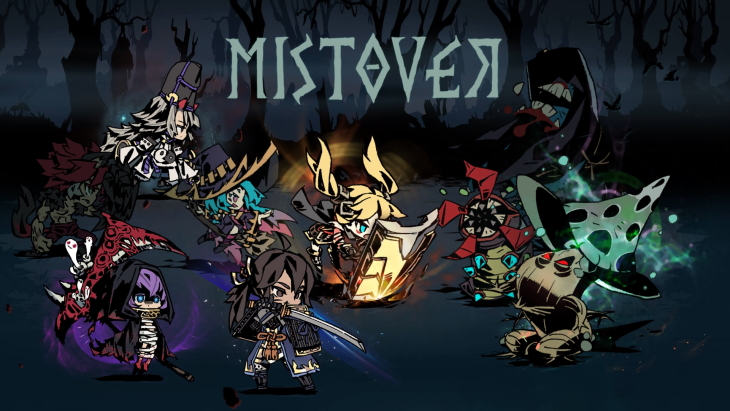
When many saw Mistover, there were comparisons to it being Darkest Dungeon with Etrian Odyssey’s characters. An apt at first glance and with one or two mechanics being inspired by them or their genre. A strategy RPG with dungeon crawling elements, set in a dark world of monsters, corruption, and chibi anime characters. The game was developed by AIMO Team (part of the KRAFTON “Game Union”). Is Mistover worth entering darkness and despair with your heroes and heroines, or will your eyes just mist-over?
Mistover
Publisher: KRAFTON, Inc.
Developer: KRAFTON, Inc., AIMO Team
Platform: PC, Nintendo Switch (Reviewed), PlayStation 4
Release Date: October 9th, 2019 (Nintendo Switch) October 10th, 2019 (Windows PC, PlayStation 4)
Players: 1
Price: $26.99
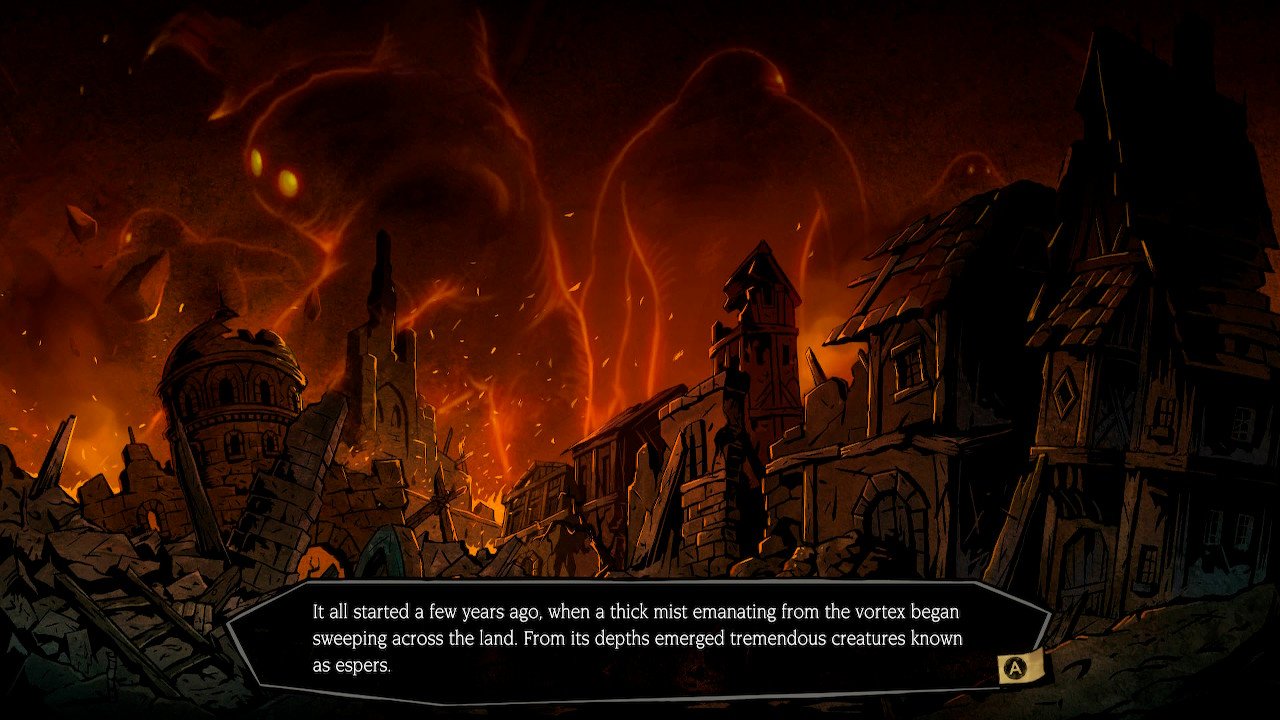
Humanity has been driven to the brink by a vortex of corrupting mist called “The Pillar of Despair.” Worst still, attempts to explore the mist result in entering different dimensions. Now as one of the last hold-outs of civilization, the people send their heroes out as the Expedition Corps into the storm to find a way to end it.
In spite of the game’s aesthetic, there is surprising levity. For example the Paladin’s backstory reveals she was cursed to resemble a child. The shop-keeper is always upbeat and friendly. The edgy thief-like Shadow Blade has a secret love of cute things and sweets.
These small motes of frivolity are not meant to juxtapose and emphasize the horror, as the horror never really comes. While there are many references to things that are dark, and with horrendous monsters, nothing ever becomes too unsettling. A “diet darkness.”
There is some interaction with NPCs as well, helping build some interest in their lives, along with mysteries to chew on. While the plot is a mere premise for the gameplay, there is still a little characterization to go with the lore- even if it is an aside most of the time.
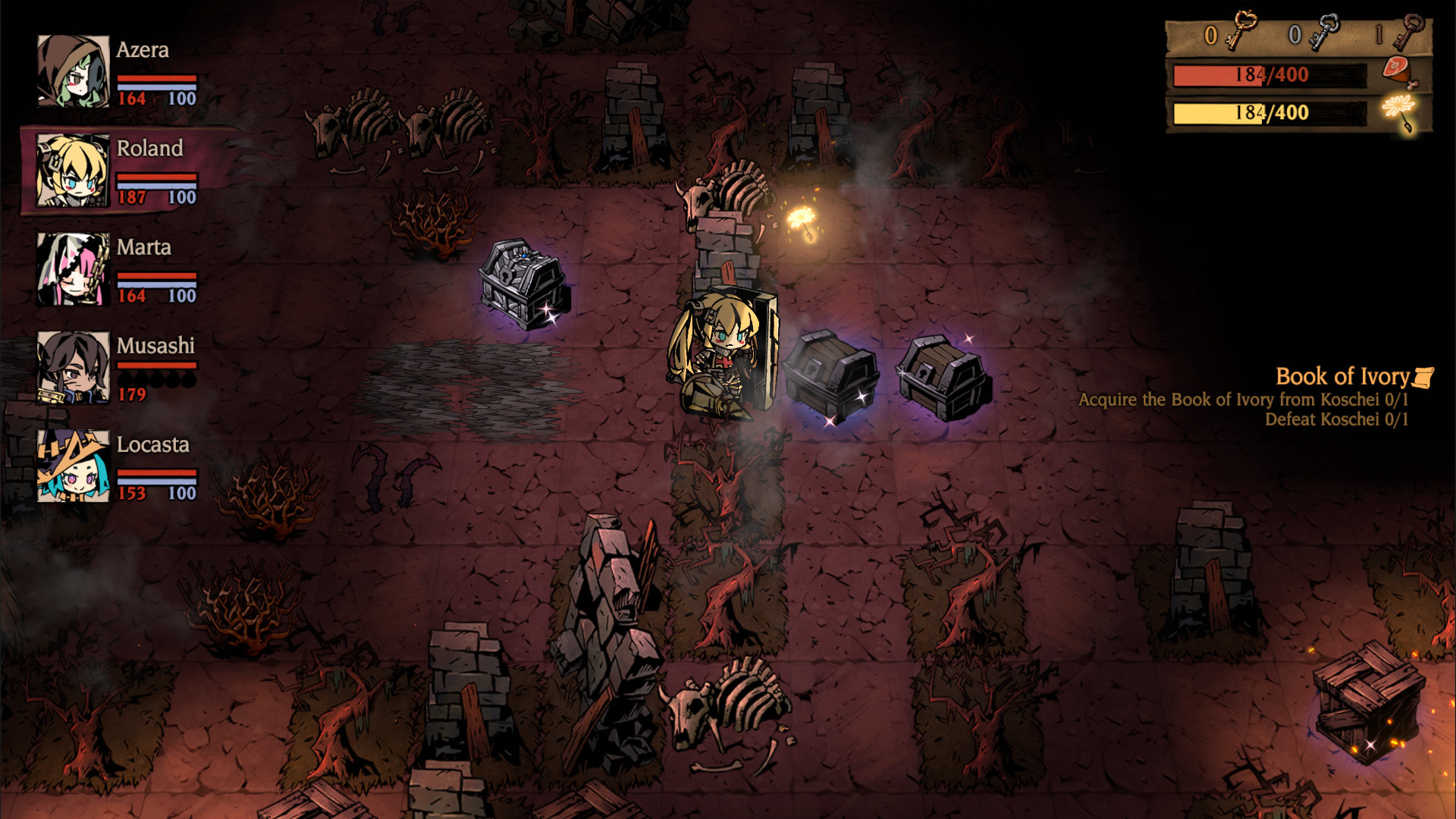
Gameplay is divided into exploration, battle, and town activities. Exploration sees your party navigating a randomly generated grid-based map, attempting to complete missions. Using dwindling light you can see enemies roaming around (moving when you do), and you can even sacrifice some health to certain plants to gain more.
Likewise, your characters also slowly lose “fullness” as they act and walk. You find yourself keeping an eye on various meters to make sure you do not starve, end up staggering through the dark, or neglect a status effect that persisted after battle. This results in balancing your supplies with what you want to take back to town (such as rare loot that will need identification).
Your party also effects what skills you can use while exploring; such as breaking objects with no penalty, or making it easier to avoid enemies. It does make a huge difference to how easy it is to explore, though you can be more focused on your party composition for combat.

Battles take place on two 3×3 grids for your party and the enemy. Whether a skill can be used depends on where the user is standing, and what areas the skill effects. For those familiar with Darkest Dungeon’s 1×4 system, this should sound very familiar.
The extra space literally adds another dimension. There are more ways skills can move units around, and more synergies between the skills of allies. Skills can also hit wider areas, meaning there is even more reason to move your enemies around.
There are a few other systems that will sound familiar. Party members can gain positive or negative passive abilities, and characters can hold-on at 0 HP before one last blow truly kills them (but not when exploring while bleeding!). Despite this, the game largely does do its own thing.
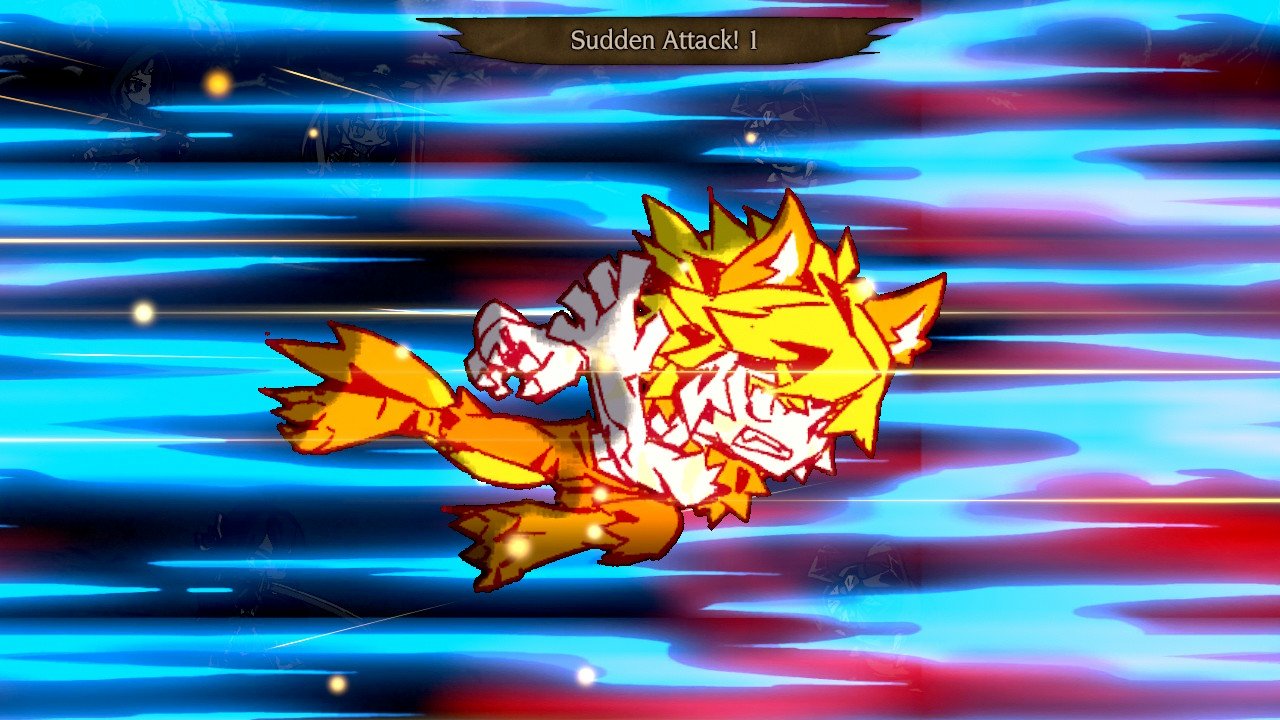
For instance, all but a character’s basic attacks use MP. The only way to recover said MP is to block, or when walking around the map. Some classes use their own point systems, increasing as they attack and kill in battle (and carry over to your next fight). Deciding when you jump into another battle is one many choices that make you consider pushing your luck.
Characters can also learn “co-op attacks” that require another class to be standing near them- such as the Sister having a Shadow Blade in front of her to unleash a stunning laser on all foes.
This adds another factor into selecting party members, and considering where everyone stands or ends up moving to during combat. This is further aided with small bonuses to defensive stats depending whether characters are in the front, middle, or back line.
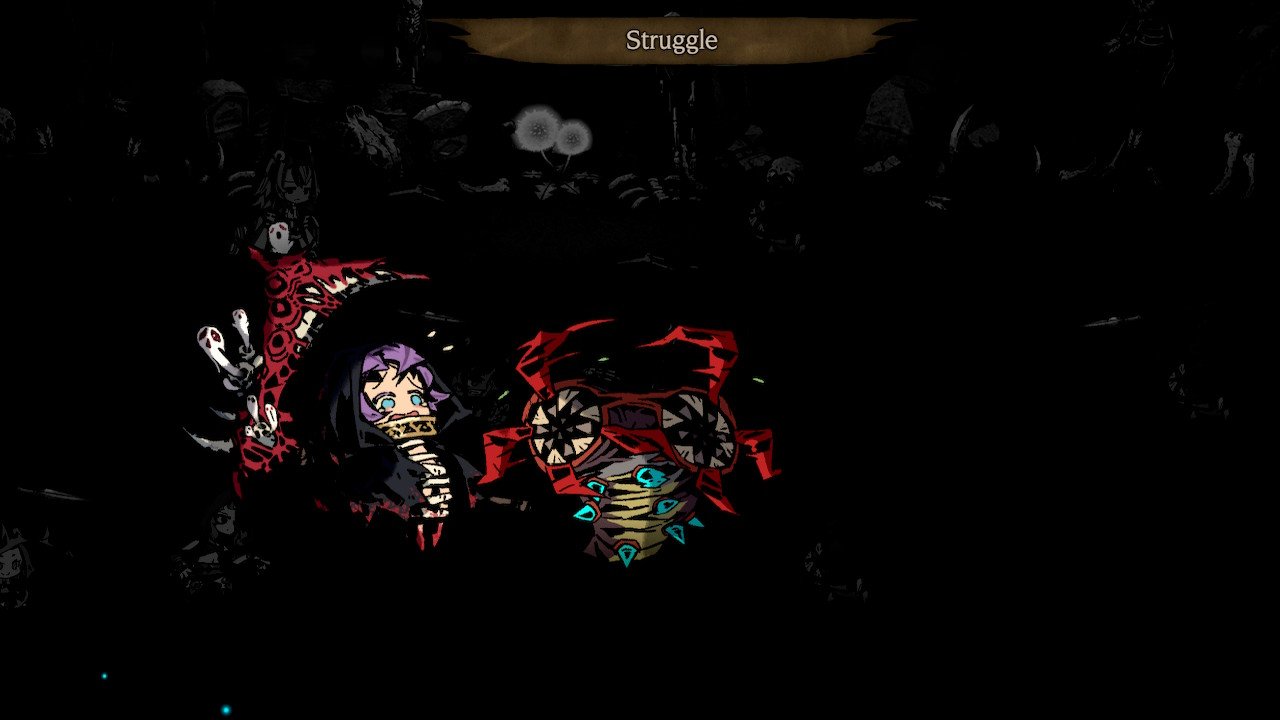
Difficulty is pretty fair. Your failures will be your own fault, as oppose to “that-one-enemy-did-the-thing-you-hope-they-wouldn’t.” You can always read what skills enemies have, or pick-up how they like to behave. Then you can react or plan accordingly for next time.
There is one caveat. When an attack misses, the target gets a temporary speed boost, and may even act straight after. This can certainly throw a spanner into well laid plans, but you are granted the same luxury (even if it feels like enemy attacks never miss and you remember the misses more than the hits).
In short you are rewarded for careful planning, rather than mitigating inevitable losses. “These nightmarish creatures can be felled! They can be beaten!” Right after they have taken over half your health in one hit. It is fair, but not easy.
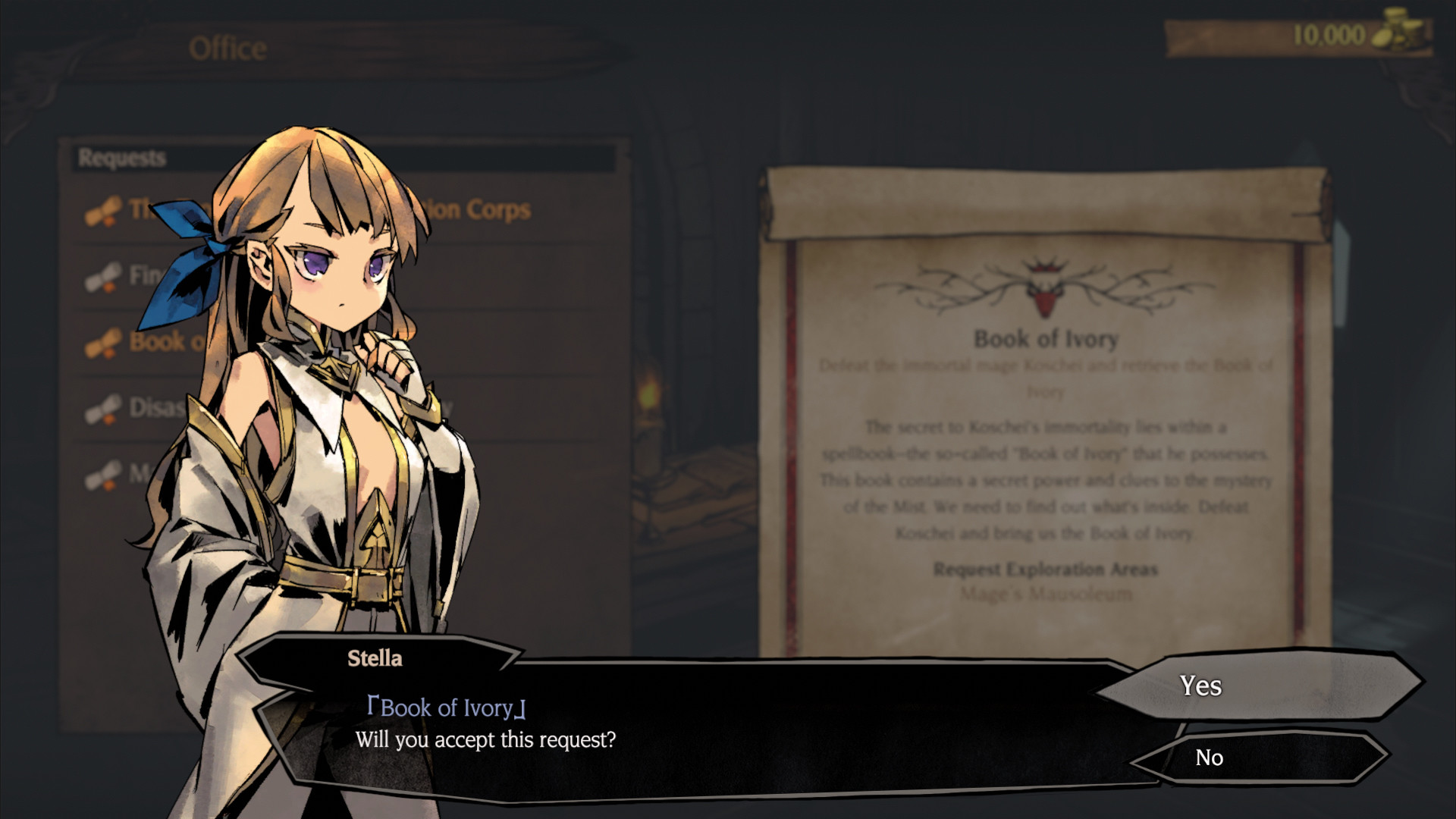
You are given missions to complete in dungeons (though you can venture in without one if you wish to grind). These usually center around finding specific objects or killing a certain number of specific enemies. All while making sure you can find the exit.
The game repeatedly emphasizes survival over mission completion, and there are times when food runs low you are tempted to book-it. Quests that are not complete remain until you complete them anyway. This would be laid-back if not for the Doomsday Clock.
The Doomsday Clock is the game’s failure state. Should you leave too many monsters alive, not light enough blood-flowers, or avoid collecting loot, then the clock ticks forwards. If it reaches midnight- you lose. However, clearing out the dungeon will move the clock back. Its a great way to encourage maximizing each trip, and discouraging jumping in without supplies for the experience or money.
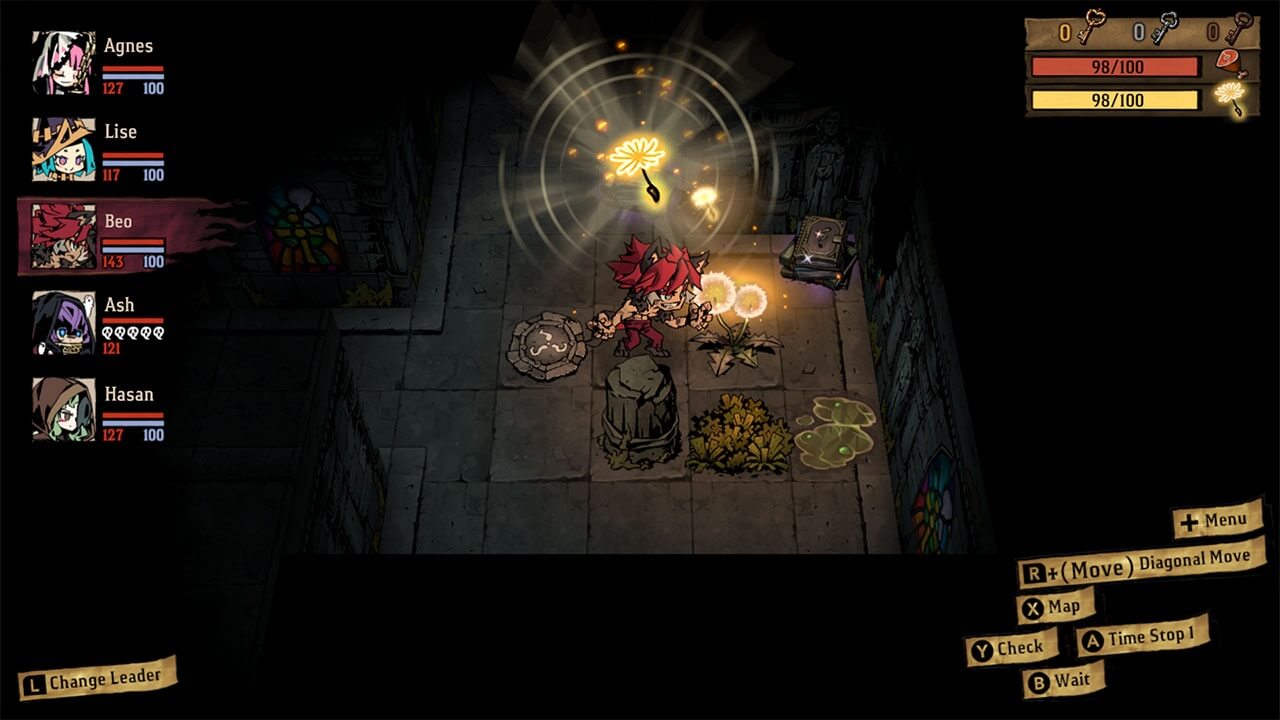
Even fully exploring small maps will require every source of light and food you can buy. Any supplies you do not use during a mission become “corrupted” when you finish (less effective and with the chance of random negative effects).
Everything centers around temptation to push your luck. Dungeon screens will show you the epic loot you could find, you can rarely find food to keep going, keys to chests may be far apart but the reward may be worth it. If you plan well, you may even avoid being bitten. Though once you do, you may end up moving the Doomsday Clock forward.
My only qualm is that one of the results for searching debris is having the whole map revealed to you. This makes things a little easy (even if the map does not show the locations of enemies) and considering how good it was, perhaps too common. When used with the Ronin who can charge across the map in a single turn until he hits a wall, and it becomes a breeze.
While you can avoid enemies via hiding in certain places or using skills, enemies tend to freeze on the spot for a long time if they lost sight when pursuing you. This can be maddening if they are blocking an exit or chest for example, meaning when you hide requires more careful consideration.
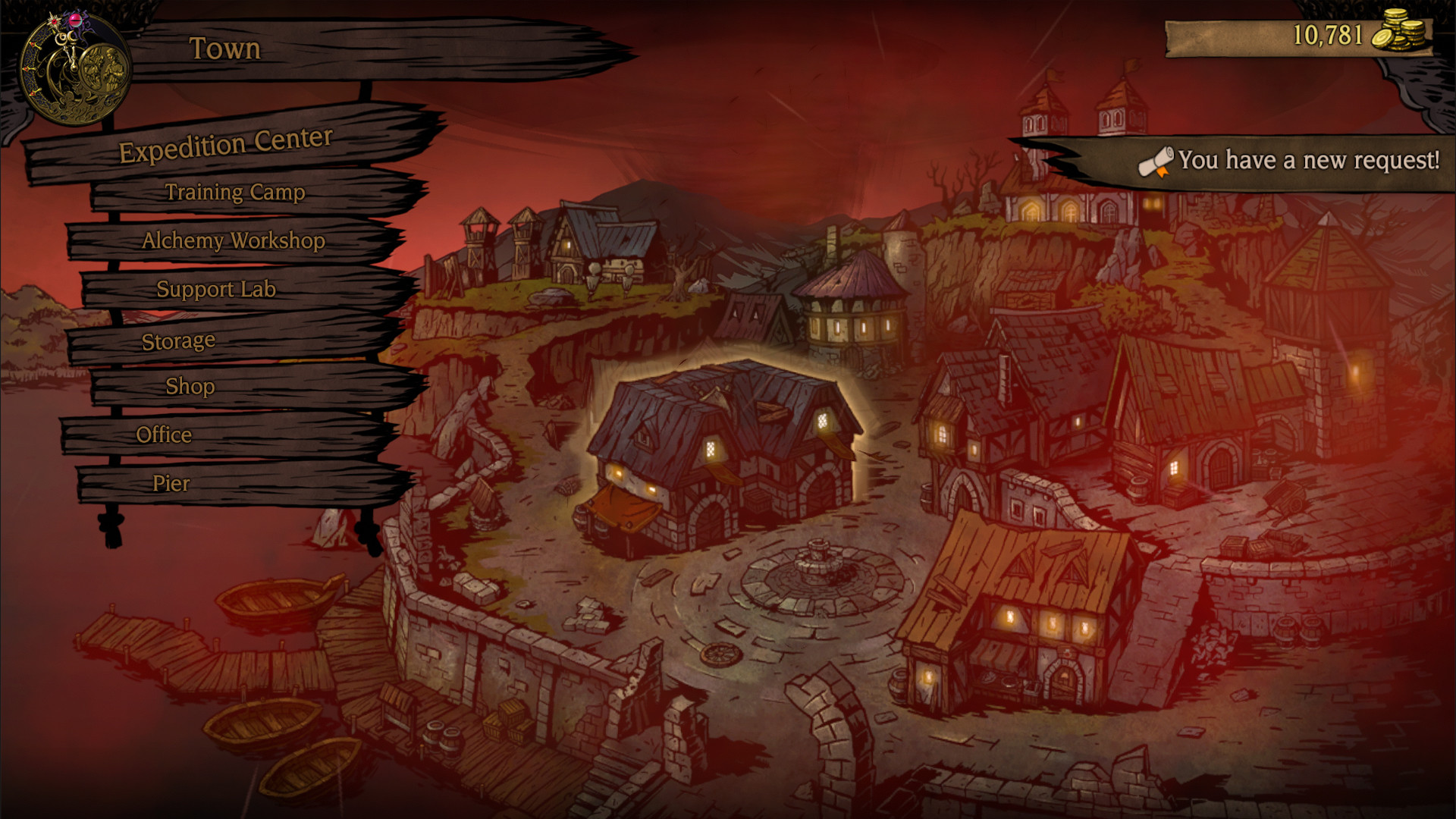
The town is where you will speak to NPCs, gain your missions, and complete preparations for your next venture. While money is tight, you usually have enough to gain enough food and light so the Doomsday Clock will at least stay still after your next quest.
You can also hire new characters, improve skills, or learn new ones. The latter involves finding another character of the same class and “spending” them to teach their skill to another (along with Skill Points and some cash).
Re-equipping old skills costs money, but every time you do it improves the skill by one level. This is brilliant if you need a different build for a particular class, but do not wish to train someone from the ground up. At the same time, it also encourages you to have multiple characters of the same class to perform different tasks- rather than turn someone into a “master” of one class.
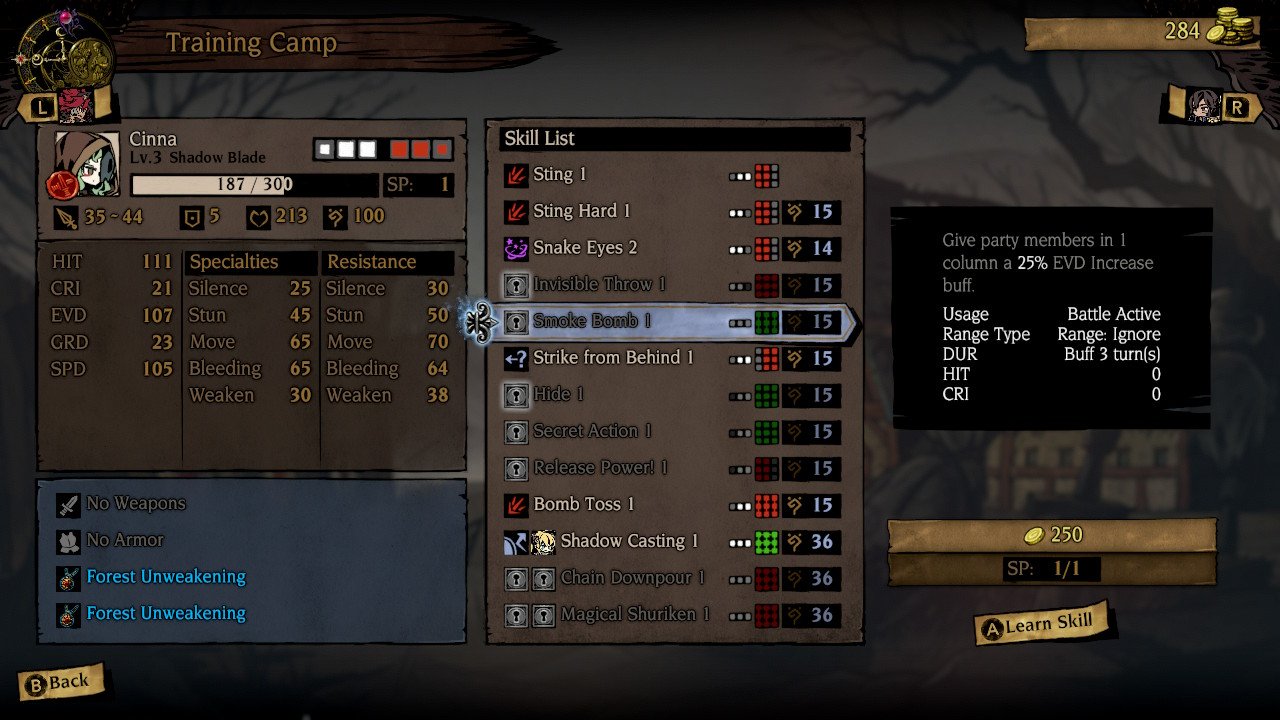
You can also identify items you have found in the mist to grant them new stat properties. You can also fuse similar items to improve their performance. Better rarity gear can be fused more times, and using better rarity gear as materials grants better improvements.
However, only one randomly selected bonus attribute across the fused items will be selected, reducing the reliability of making specific gear have specific properties. This does prevent characters being overpowered however. This does mean the bonus stats are not something you seek out and are, well, a bonus. Though the Doomsday Clock would have prevented any excessive “gear hunting”.
Overall the gameplay sets itself apart from what others quickly compared it to. A solid strategy RPG that commands careful preparation and strategizing, and rewards it. Most punishments come from your own greed or mistakes, rather than RNG.
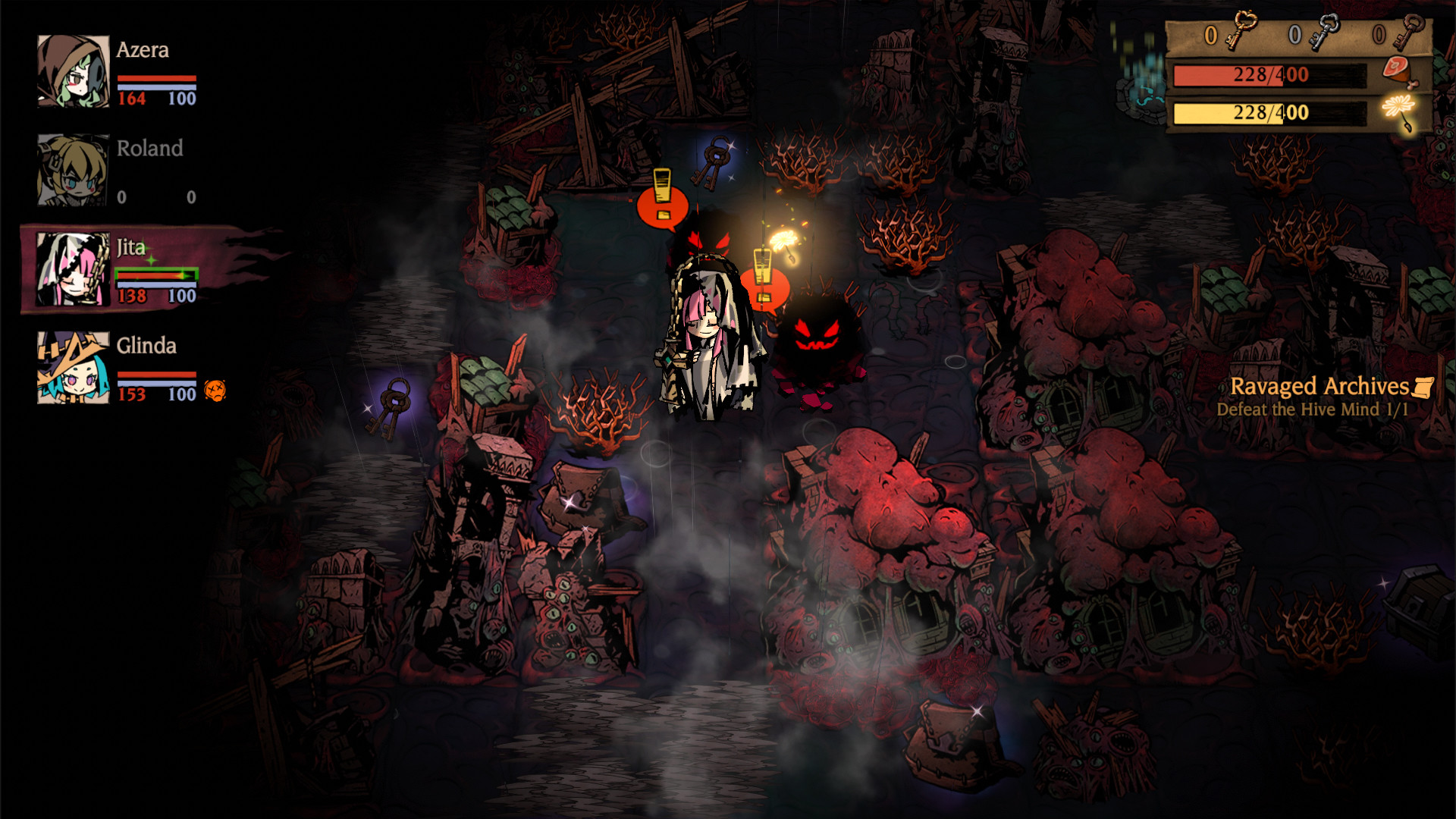
The art style was quickly compared to Darkest Dungeon, though the comparison is not entirely correct. While the game has a “chunky and angular” style with thick outlines, there is little texture or detail in the hand-drawn sprites. This is not a negative however, as the style looks fantastic.
Everything feels deliberate, as oppose to budgeted. Sprites look great at practically any moment, and bleed personality. The same applies for the environments- all looking suitably creepy and morose. Buildings in town could have just been an NPC and a backdrop- but there is always something moving (a flickering fire or dust in the light) to prevent it being static.
Animations use paper-doll style motion-tweening as characters move around or stand in place, with animations in battle utilizing one or two frames of animation and visual effects. The visual effects also allow for some more wild anime-esque special attacks.
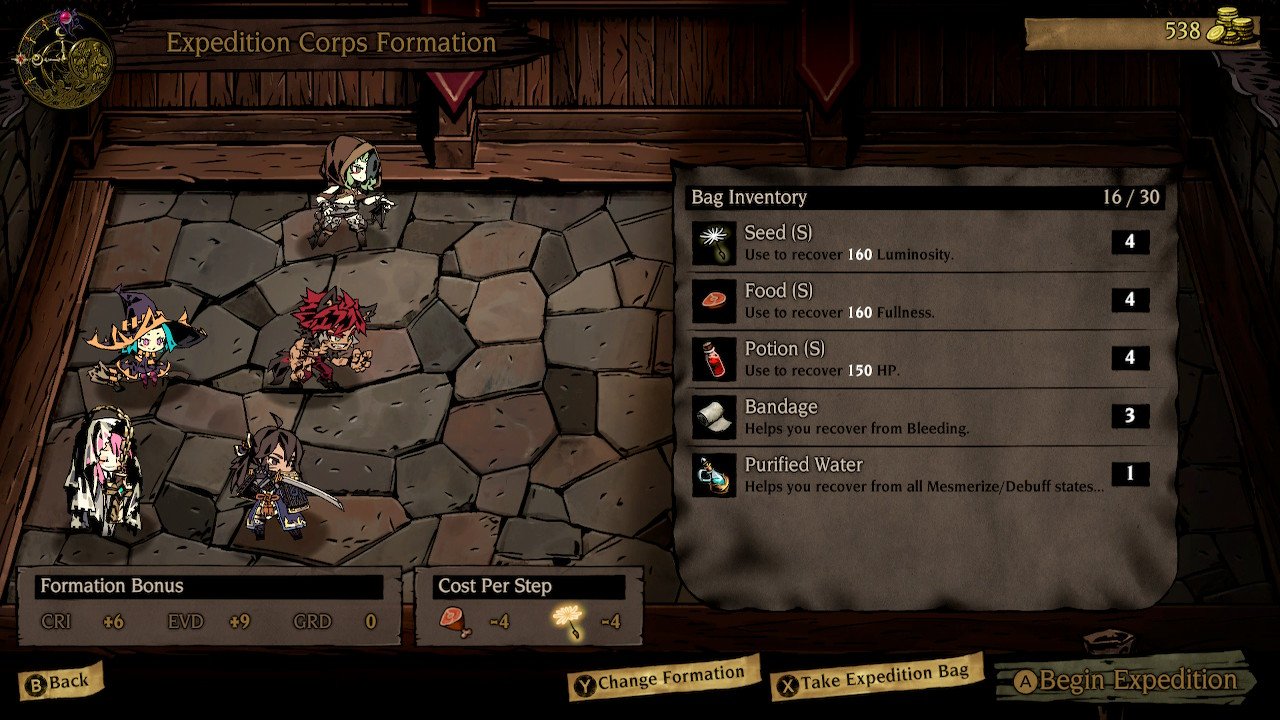
I do have a few minor gripes. First, there are rare moments when the text in the UI runs into the next column. Such as “Chance of Having an Effect” running into the actual percentage chance. This minor error is sure to be fixed in a future update however.
The second is that there is only one sprite per class- not even recolors. Not only would this have allowed for quicker identification if you had several characters of the same class, but also a touch of customization. As stated earlier, it is a minor gripe.
Each area has different levels of dungeons, and there are subtle differences in each. Areas can even have weather effects to further aid making each dungeon- even in the same area- feel different beyond their enemies and enemy levels.
Overall the game looks great, and runs smoothly (bar one random crash I had, though the auto-save put me right back to the point before I crashed). The load times can be a tad long when first booting up the game, but otherwise any loading is done exceedingly quickly.
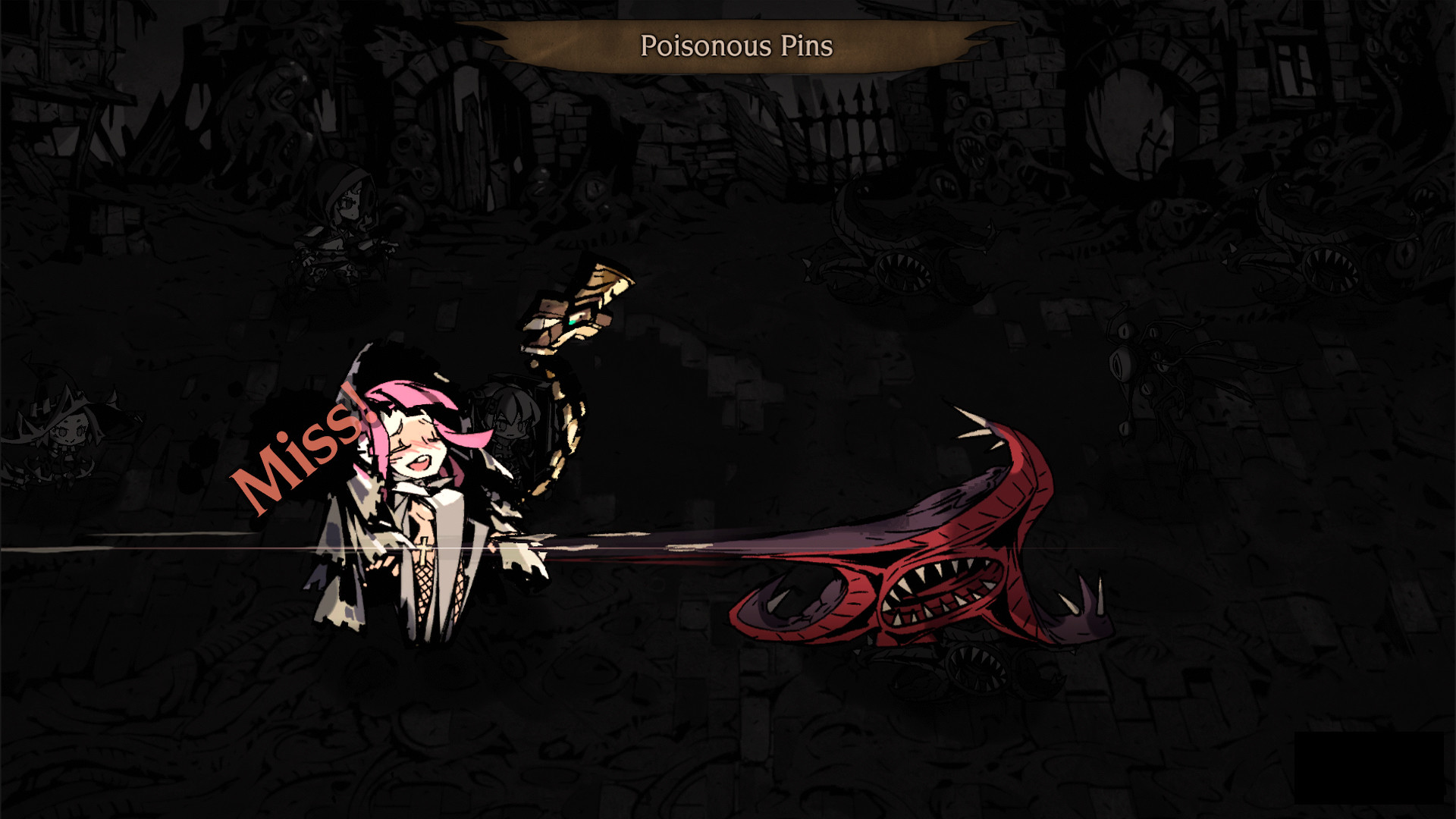
Music across the board would, yes, not sound out of place in Darkest Dungeon. Droning and ominous when exploring, becoming more tense when enemies are near, with driving drums and strings in the heat of battle.
Yet, much like the style of the game overall, there are more hopeful and even up-beat tracks. The shop music sounds like something straight out of a slice-of-life anime. Though these tracks are rare, it does show the sound-track has more to offer than (well made) gloom and dread.
Sound effects are also satisfyingly impactful. Footsteps never get annoying, attacks slam into characters, and special attacks are given the extra oomph through magical and ethereal sounds.
Voice acting is only in Japanese, and translation is somewhat accurate despite not being one-to-one. There are times an action you will perform repeatedly will result in the same sound-bite being played over and over, and that can grate on your nerves.
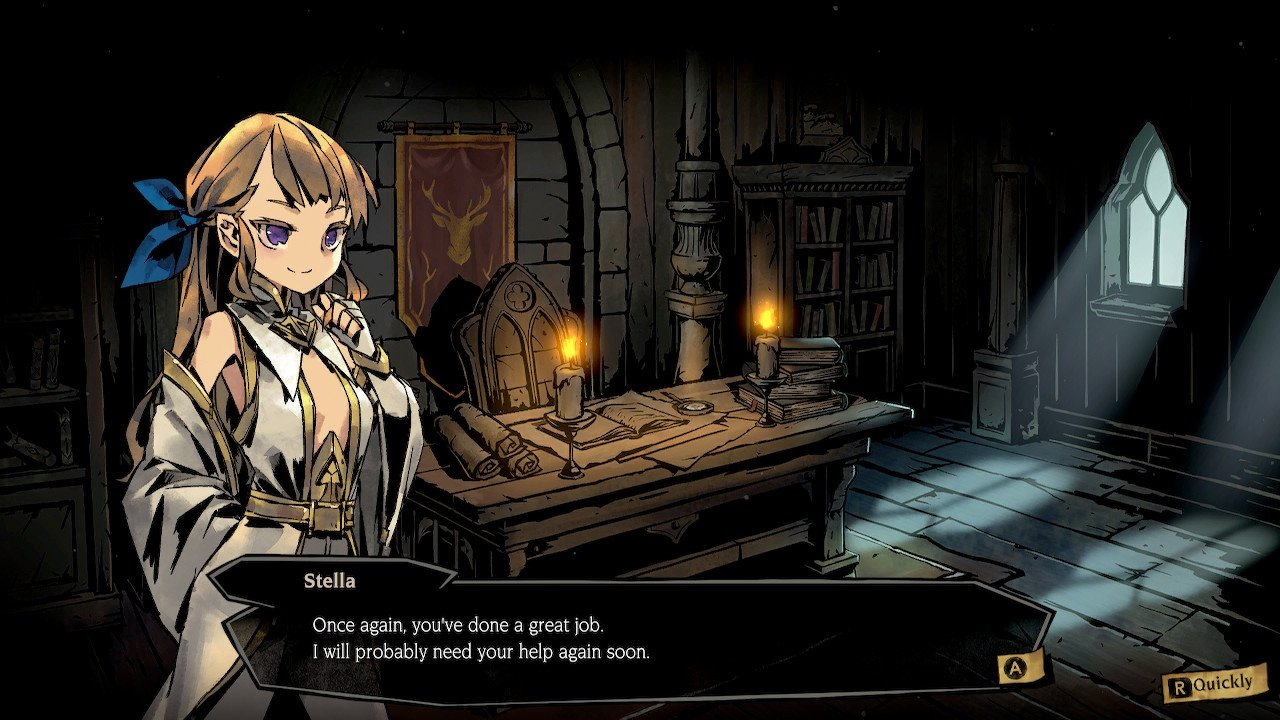
It is unfair to call Mistover a combination of other games, because the end result is something that stands out on its own with unique gameplay. It manages to be dark without being dreary, and tactical without being frustrating or (entirely) random.
You do not have to be the darkest dungeon, or write a great odyssey. Sometimes you just need to take lots of good ideas, and put them together in a way that works, to make something brilliant. If you want great strategy, Mistover should not be passed over.
Mistover was reviewed on a Nintendo Switch using a review copy provided by KRAFTON, Inc. You can find additional information about Niche Gamer’s review/ethics policy here.